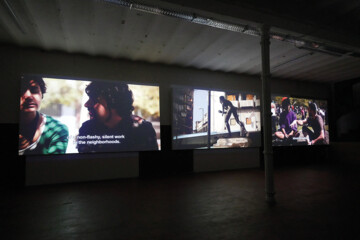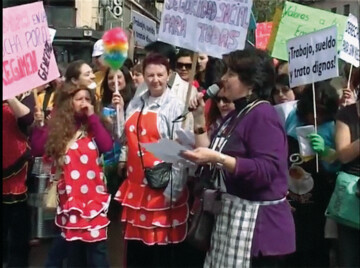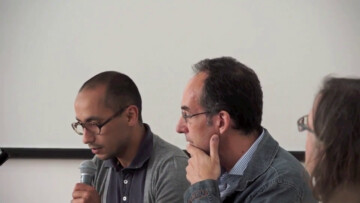“Península. Colonial processes in art and curatorial practices” is a collective research project that questions the narratives of art and culture on the Iberian Peninsula, digging in the colonial foundations of its power structures from the past to the present. The group consists of around 50 researchers from very heterogeneous backgrounds: academics, curators, artists and activists, linked by informal bonds of affection, common → interests, and political commitment.
We endorse a notion of research that works against the grain of the neoliberal logic of academic and artistic production. We conceive it as a situated and performative process, which both resists and exceeds hegemonic forms of circulation and accumulation, and contributes to common and → emancipatory forms of knowledge.
We explore methodologies that challenge the Anglo-Saxon cannon and enter into a dialogue with the Latin American theory of coloniality and → decolonisation, thus inverting both the North-South direction of academic and artistic trends and the East-West logics of Spanish and Portuguese colonial histories.
By the term “temporalities” we mean the plural experiences of time which are at the same time silenced and produced by the colonial processes. We claim the emancipatory power of these temporalities to challenge and subvert the hegemonic articulation of time and its narratives. We denounce a double fallacy with regard to time, as follows:
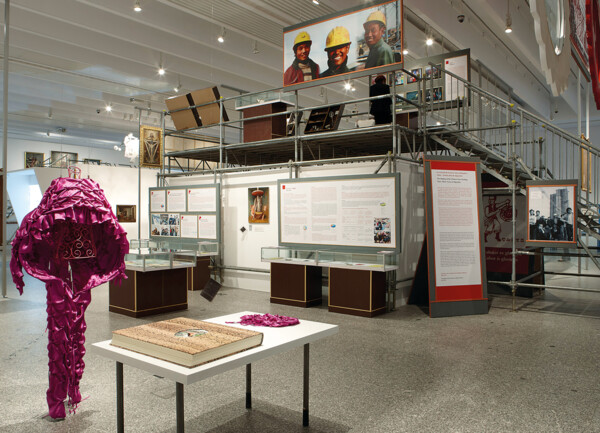
The Potosí Principle: How shall we sing the Lord’s song in a strange land?, exhibition view, 2010. Courtesy of Museo Reina Sofía.
- There are two completely separate temporalities: that of the master, “modern time”, and subaltern temporality: primitive, popular, indigenous, usually identified with the past, and ready to be expropriated or abolished on behalf of the idea of progress and civilisation. This dual temporality is nothing but an interested projection from a colonial power, which has been very successful in reproducing patronising forms of representing the others. In Spain, the → Universal Exhibition of Seville in 1992 marked the neo-colonial attitude promoted by the → slogan “The Age of Discovery”, making a distinction between one master modern project and a subaltern that was the object of conquest, study, and colonisation. From a radically different perspective, the exhibition The Potosí Principle”, although presenting a radical critique to origins of modernity, fell again into schematic binarisms through a Marxist dialectic, reproducing the Northern imaginary of the subaltern → South as past, primitive and precapitalist. This approach of the German curatorial team was contested by the fourth curator, who resigned from the project, the Bolivian sociologist Silvia Rivera Cusicanqui, with the publication Principio Potosí Reverso.
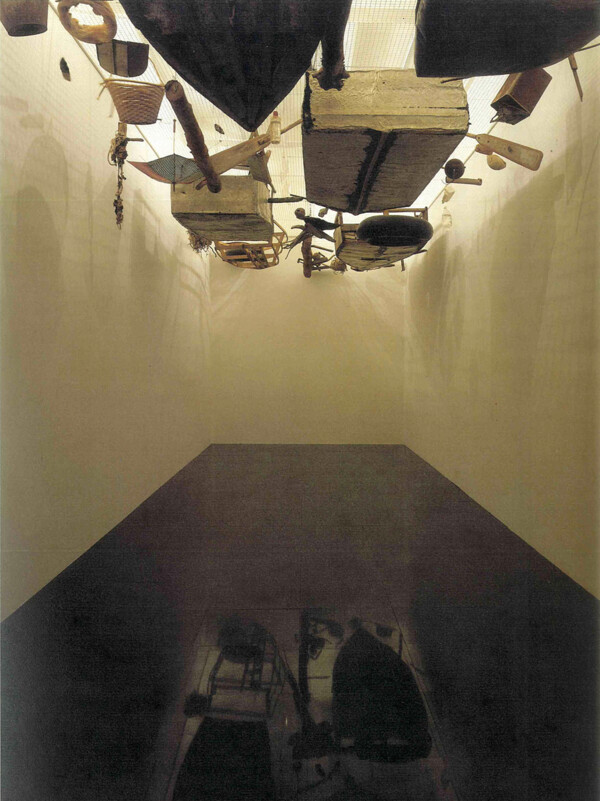
Cocido y Crudo / Cooked and Raw, curated by Dan Cameron, exhibition view, 1994–1995. Courtesy of Museo Reina Sofía.
- There are multiple temporalities coexisting, juxtaposed, and in global harmony. This discourse hides and naturalises the colonial and postcolonial order, in which the time of power – most often financial power – is ubiquitous but never made visible. As many platforms have already pointed out, Magiciens de la terre (1989) in Paris was the most evident initiative in this sense. In Spain this approach arrived with the exhibition Cocido y Crudo [Cooked and Raw], curated by Dan Cameron, with a global but more art-system feeling in the selection of the artists.
We are aware that the term temporalities conveys the ambivalence of endorsing this hierarchical structure of time by separating one hegemonic temporality from many subaltern and partial ones (always in the “past”) while designating, at the same time, a plurality of coexisting chronologies in a post-historical time. Our challenge is, thus, to find, in the ambiguity of the concept, the possibility to blow up hegemonic chronologies and to release agencies related to other forms of time experience. In order to do that, first we need to recognise the → continuity between the colonial past and the current global temporalities, and the fact that coloniality is a continuous and dynamic process producing many diverse forms of experience of time and time narratives connected to each other by many forms of power relations.
This awareness may allow us to unveil the subtle interaction of historical temporalities and contemporary temporalities in the production of colonial, class, and gender structures, and may allow us, as well, to fight against certain reactionary “pathologies of memory”, such as “the end of the history” and “déjà vu”.
It may allow us, finally, to open spaces to qualitatively different notions of time and to “occupy” and “invert” existing ones: fictional time, indigenous time, sexual time, dream time, play and fiesta time, lazy time, the time of the → migrant the time of the frontier, the time of enclosure, the time of revolt. These times have been developed not only in a “representative” manner, but also in a committed and activist way by artists and collectives, some of them also members of Península. For example, in relation to the time of the frontier, artists such as Daniela Ortiz and Xose Quiroga, both members of Península, have deeply engaged with social movements against the racist raids carried out by the Centre of Immigration Detention and related deportation flights. In curatorial terms, the time of the frontier with the North of Africa was already questioned 1998 with Almadraba, a project based on the three corners of the Southern Frontier: the Moroccan, Spanish, and British.
Cinemacopains, Territorio Doméstico, 9´ 8˝ video, 2010, posted on YouTube on 14 April 2010.

Oliver Ressler, Take the Square, 3-channel video installation, 2012. Courtesy of the artist and Museo Reina Sofía.
Similarly, Territorio Doméstico – a collective of immigrant domestic workers – have used performative strategies to fight against social discrimination in relation to the time of the migrant on the streets. (Figure 23) Sexual time has been posed as a central issue in many movements of the “post-porn” scene in Barcelona. As Lucía Egaña Rojas, a member of Península, has noted in her research, there is a fundamental sudaca-transfer on the configuration of that sexually radical time. Finally, the time of the revolt was particularly dense in the context of the social movements related to 15 May 2011, as has been documented and → intervened from the very inside by artists such as Oliver Ressler and Cecilia Barriga.
We are not proposing a recovery of subaltern histories, as postcolonial studies have claimed, but a radical openness to a plurality of time narratives which are not anymore isolated but may relate in antagonist, dialogical, or promiscuous ways. These temporalities are not just there waiting for us, well-intentioned artists and scholars, to activate, but instead require radically different ways to “make memory” and historicise that necessarily destabilise the position of the story-teller her/himself and the whole structure of knowledge production and circulation. In a modest but committed way, Península is rehearsing the interference of different narrative and circulation modes that pollute each other, mixing strata of past and present, recognising the contingent and performative nature of the task, and its transformative and political potential.

